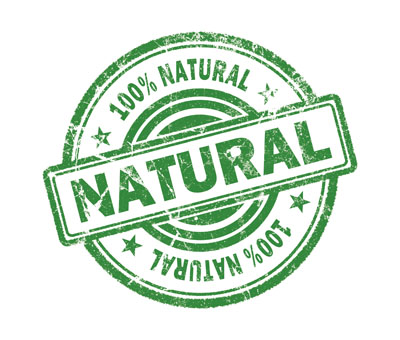The new clean label initiatives of Kraft, Knorr and the like are proof of this. Originally, it was a concept promoted by small- and medium-size companies to differentiate themselves, but has since been adopted by the major players of the food and beverage Industry.
Although not legally defined, clean label typically means few, free from and minimally processed ingredients as well as natural alternatives to artificial colours, flavours and preservatives.
For instance, Kraft replaced Yellow 5 and Yellow 6 with annatto, paprika and turmeric to provide the signature colour of their macaroni and cheese, and Knorr’s Meal Makers product line is now made with “100% natural ingredients.”
Clean label has marked a paradigm shift in how the whole industry manufactures and delivers foods and beverages, affecting companies up and down the supply chain.
Nearly 75% of consumers in the United States strongly agree that it is important for food labels to contain mostly recognisable ingredients, and 91% believe food and beverage options with recognisable ingredients are healthier. In Europe, 81% of consumers believe it is very or quite important that they recognise and/or are familiar with all the components on the ingredient list when buying a food or drink product.
However, simplifying ingredient labels is much more complex than consumers realise. Replacing artificial ingredients with their natural alternatives is not a simple 1:1 replacement.
Each artificial ingredient has a functional role in a finished product and does it effectively, whether it is adding colour, improving structure or providing a nutrient. Which is why they’re more commonplace than their natural counterparts.
For example, completely replacing sodium benzoate with a rosemary extract would not achieve the same degree of efficacy, or swapping out ascorbic acid with acerola powder would not reach the same level of vitamin C; acerola powder only contains a maximum of 6% naturally occurring vitamin C, which is much lower than a synthetically manufactured vitamin C powder.
Holistic thinking
When trying to simplify ingredients labels, formulators should also keep in mind that the entire product may change, not just the functional role.
Depending on the application, colour, flavour, texture and even shelf-life can be negatively affected when natural ingredients are used instead of their artificial counterparts. For example, transitioning from Red 40 to beetroot will pose many challenges: pH is a huge constraint when using natural red, pink, and purple colours, and use levels will probably be much higher, leading to flavour issues.
Although all these attributes are important, flavour is the most important of them all. Despite the increased demand for simple and wholesome ingredient labels, taste is still the number one influence when purchasing a food or beverage.
Consumers expect a certain amount of flavour impact and consistency when regularly purchasing an item. Fortunately, flavours are a little different when compared with other components such as colours because, regarding performance, natural flavours are close to artificial ones.

In some cases, with a great flavourist and flavour system, the main differences in product might only be price and use level. Products reformulated with clean label ingredients typically takes formulators months to perfect, ensuring consumers get the exact same product as before … but cleaner.
As clean label was transitioning into the mainstream, the industry was not only improving formulations towards a clean label positioning but also processing and technologies.
A wide variety of ingredient manufacturers and food equipment manufacturers are creating new and more consumer-friendly methods to address these clean label challenges. New separation and processing technologies made natural alternatives to artificial ingredients easier to use; a great example is stevia as a natural high intensity sweetener.
New separation techniques and regulatory approvals in the US have made natural blue and green colours available that were not in the past. Even new enzymes and natural plant extracts are being used as shelf-life extenders and mould inhibitors to keep product safe for consumers.
One of the biggest advances in terms of processing has been high pressure pasteurisation (HPP). It has been especially impactful in the fresh-pressed juice segment, which has helped to spur a large rise in new product launches in a highly premium category.
Price and performance
However, reformulation and new processing technologies come at a price, especially for small- and medium-size companies. Artificial ingredients not only do their functional role more effectively, but also more cost-effectively than their natural counterparts.
Price has always been a challenge with clean label ingredients, and it will continue to be in the future. After taste, price has the greatest impact on the decision to buy foods and beverages (71%), followed by healthfulness (64%) in the US.
In Europe, consumers rank the ingredient list as the second most important factor (77%) considered in their purchasing decision, with price taking the top spot (86%). It is important to note that taste was not an option in the Europe survey.
Until healthfulness/ingredient list surpasses price, finished product manufacturers without economies of scale need to convince consumers that their clean label product is worth the premium price, just like the HPP segment has done.
However, the future of clean label is very optimistic; 73% of consumers in Asia, Europe and the United States are willing to pay more for products made with ingredients they trust.
To take advantage of clean label’s optimistic future, manufacturers need to consider what clean label will mean in the future, not just today.
Consumers will not only want to know what ingredients are in their product, but also where they come from. Several innovative companies are now including the origin of each ingredient, down to the seed level.
Once again, we are seeing small- and medium-size companies promoting this concept to differentiate themselves. Transparency is at the core of clean label, and it will become more of an emphasis in the future.
